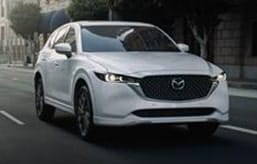- The Ford Explorer gets new tech and a nicer interior for 2025.
- BlueCruise is available for the first time on an Explorer, though it comes with a subscription fee.
- Are these updates enough to keep the Explorer competitive against its rivals?
2025 Ford Explorer First Drive: Lots More Tech, But Still a Mid-Pack Pick
Hands-free driving and a pair of shiny new screens headline Ford's refreshed three-row SUV
The Ford Explorer once set the standard for three-row SUVs. It's only recently that the bar has been raised by a series of increasingly tech-savvy newcomers (Kia Telluride, anyone?). Ford, to its credit, hasn't thrown in the towel, and the refreshed 2025 Ford Explorer adds a pair of big ol' screens, hands-free driving assist and a brand-new infotainment system. Is that enough to put the Explorer back on top?
I always liked the previous Ford Explorer because it was surprisingly fun to drive, had a lot of cargo space, and a used powerful base engine. I was less impressed by its interior, which was dated and not as chic as the cabins of many of the Explorer's rivals. There was also less passenger room in the second and third rows than the Telluride despite the Explorer being 2 inches longer.
This refresh unfortunately did not improve passenger legroom, but it did upgrade the interior as a whole. The two new screens, one a 13.2-inch touchscreen and the other a 12.3-inch gauge cluster, are nice to look at and slightly surpass what you'll get on the Telluride in terms of size. The new infotainment system, dubbed the Ford Digital Experience, is the latest to lean on Google built-in. It uses an Android-based system that defaults to Google Maps and includes Google Assistant for voice commands.
The screen is responsive and the built-in navigation is easy to use, especially if you're familiar with Google Maps. Heating, air conditioning and seat temperature are all controlled by the 13.2-inch touchscreen. That's not my preference, especially while driving, but thankfully the screen's responsiveness makes this a smaller pain point.
And don't worry, Ford hasn't gone full Chevrolet on us; you can still use Apple CarPlay on the refreshed Explorer. Wireless Apple CarPlay and Android Auto are standard features, and connecting my iPhone to Bluetooth was a quick and painless process.
The rest of the interior, while improved in terms of material quality, is not particularly interesting or eye-catching. There's a lot of gray, which may appeal to those in search of a cool, minimalist space in which to commute. The red stitching in the ST-Line marks some of the only color inside the Explorer; the other prominent example is the blue Ford Oval on the steering wheel.
BlueCruise is the other significant addition to the 2025 Explorer. Edmunds staff had mixed experiences with this tech in our long-term Mustang Mach-E, but the system worked well on the route around Ann Arbor, Michigan, that Ford mapped out for my Explorer drive. All Explorers, other than the base Active trim, are BlueCruise capable. That's an important distinction, "capable," because you need to pay a subscription fee to actually use the technology.
You can pay $2,100 for three years of BlueCruise when you purchase your vehicle, or you can pay $75 a month ($800 annually) to use the hands-free driving tech. While BlueCruise worked fine on my drive, Edmunds' long-term experience with the tech makes me wary that it's not actually worth this hefty fee.
The Explorer can be competitive on pricing, though higher-trim models can get a bit pricey. The base Active trim, which does not come BlueCruise-equipped, starts at $41,220. The most expensive trim is the ST, which swaps out the base 2.3-liter four-cylinder engine with a 3.0-liter V6 that makes 400 horsepower, 100 ponies more than the standard engine. The ST will set you back $56,800, but if you're more interested in getting all the features than a souped-up engine, the Platinum trim starts at $53,100. The Goldilocks spot is the ST-Line, which comes with some creature comforts and BlueCruise availability and starts at $45,980.
Is the V6 worth the upgrade? I don't really think so. Both engines feel perfectly robust under acceleration, so unless you're the "more is more" type, you'll be fine sticking with the base turbo-four. Regardless of engine, the Explorer is pretty good to drive — easily one of the better steers in its class. The 2.3-liter engine will also return 24 mpg in combined driving with rear-wheel drive, which is better than what you'll get in a V6-powered Kia Telluride (22 mpg combined). Stepping up to the 3.0-liter V6 drops the Explorer to 20 mpg combined.
The Explorer is undoubtedly more competitive among midsize three-row SUVs than it was before this refresh. Its technology is no longer a weakness, though I'm not a fan of its interior styling nor the BlueCruise subscription model. This refresh didn't leap the Explorer up to the lofty heights of the Kia Telluride, Hyundai Palisade or Toyota Grand Highlander. But it's much more competitive against the middle-of-the-pack options, like the Honda Pilot and Volkswagen Atlas. That's not a huge win but a win all the same.
Edmunds says
It might not be the benchmark it once was, but the 2025 Ford Explorer is once again competitive against the latest crop of midsize SUVs.





 by
by  edited by
edited by